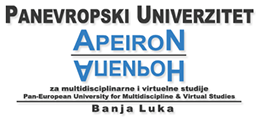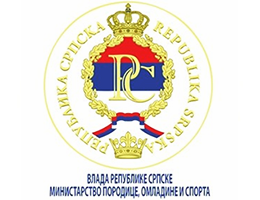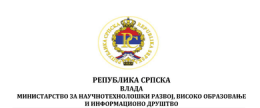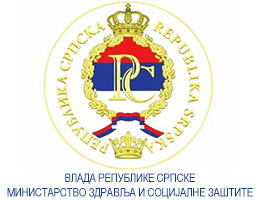Comparative Analysis of Rhytmic Structures Motor Performance Abilities in Dancers
Volume 4, Issue 1 (2014)
Volume 4, Issue 1 (2014)
Comparative Analysis of Rhytmic Structures Motor Performance Abilities in Dancers
Abstract:
The aim of this study was to determine the differences in motor performance of rhythmic structures between dancers of social dances Salsa and Argentine Tango. The research was conducted on 50 subjects aged 19 to 25 years ± six months. Subjects were learning social dances Salsa and Argentine Tango during 12 months. Motor performance of rhythmic structures in dancers was estimated with battery of tests comprising five tests. The difference between groups was determined with t-test for small independent samples. The results showed that significant differences exist only in expressing rhythmic structures with feet in favor of Salsa dancers.
Keywords:
social dances, rhythmic ability, dancers, comparative differences
Full Text:
References:
- Blume, D.D. (1983). Karakteristika koordinativnih sposobnosti i mogućnosti njihovih stvaranja u procesu treninga. Beograd: Savremeni trening, 2, 17-27.
- Busch, D. & Strauss, B. (2005). Qualitative differences in performing coordination tasks. Measurement in Physical Education and Exercise Science, 93 (3), 161-180.
- Derri, V., Tsapalidou, A., Zachopolou, E., & Kioumourtzoglou, E. (2001). Effect of a music and movement programme on development of locomotor skills by children 4 to 6 years of age. European Journal of Physical Education, 6 (1), 16-25.
- Derri, V. Tsapalidou, A., Zachopolou, E., & Gini, V. (2001). Complexity of rhythmic ability as measured in preschool children. Perceptual and Motor Skills, 92 (3), 777-785.
- Getchell, N. (2006). Age and task-related differences in timing stability, consistency and natura frequency of children’s rhythmic, motor coordination. Developmental Psychobiology, 48 (8), 675-685.
- Humphrey, D. (1991). The art of making dances. New Jersey: Princeton Book Company
- Kostić, R., Popović, R., Popović, D., & Anastasijević, B. (1987). Relacije muzičkih i kognitivnih sposobnosti i motoričkog izražavanja ritmičkih struktura. UG. Zaječaranović (Ur.), Zbornik radova Filozofskog fakulteta, knj. 11, (str. 185-192). Niš: Filozofski fakultet.
- Kostić, R. (1992). Predviđanje uspešnosti izvođenja ritmičkih struktura. U N. Živanović (Ur.) Zbornik radova Filozofskog fakulteta (str. 59 – 69). Niš:Filozofski fakultet, Sveska fizička kultura.
- Костич, Р. (1993). Релации между когнитивните, конативните и музикалните параметри и моторното вљзпроизвеждане на ритмически структури. У М. Хуманизиране на педагогическир процес (184-185). Благоевград: Министерство на науката и образованете, хотозападен университет „Неофит Рилски“.
- Kostić, R. (1994). Korelacije između koordinacije i bazičnih muzičkih sposobnosti. Facta Universitatis – Series Physical Education, 1 (1), 45-50.
- Kostić, R. (1995a). Uspeh u izvođenju struktura drušvenog i džez plesa. Facta Universitatis – Series Physical Education, 1 (2), 71-76.
- Kostić, R. (1995b). Metrijske karakteristike mernih instrumenata za procenu sposobnosti izvođenja ritmičkih struktura. Zbornik radova „Fis – komunikacije 95“. Niš: Filozofski fakultet, Serija fizička kultura.
- Kostić, R. (1996). Povezanost sposobnosti izražavanja ritmičkih struktura i uspešnosti u plesu. Facta Universitatis – Series Physical Education, 1 (3), 47-53.
- Kostić, R., Jocić, D., & Uzunović, S. (1999). Relation of conative characteristics and success of performing dance structures. Niš: Facta Universitatis, Series Physical Education, 1 (6), 15 – 23.
- Kostić, R., Uzunović, S., Oreb, G., Zagorc, M., i Jocić, D. (2006). Relacije uspeha u latino-američkom plesu sa koordinacionim sopsobnostima. U D. Petković (Ur.), Zbornik radova sa međunarodnog skupa „Fis-komunikacije 2006“ (86-89). Niš: Fakultet fizičike kulture.
- Mandarić, S. (1999). Uticaj nastave plesova na razvoj osećaja za ritam, koordinaciju i frekvenciju pokreta donjih ekstremiteta. Neobjavljena magistarska teza. Beograd: Fakultet fizičke kulture.
- Martin, D., Carl, K., & Lehnertz, K. (1991). Handbuch Trainingslehre. Schorndof: Hofmann
- Mastrokalou, N. & Hatziharistos, D. (2007). Rhythmic ability in children and the effects of age, sex and tempo. Perceptual and Motor Skills, 104 (3), 901-912.
- Mutavdžić, V. (1995). Metrijske karakteristike mernih instrumenata za procenu motoričke realizacije ritmičkih struktura. Zbornik radova „Fis – komunikacije“. Niš: Filozofski fakultet, Serija fizička kultura
- Oreb, G. (1992). Relativna efikasnost utjecaja plesa na motoričke sposobnosti studentica. Neobjavljena magistarska teza. Zagreb: Fakultet za fizičku kulturu.
- Oreb, G. & Kilibarda, S. (1996). Značajnost ritmičkih sposobnosti u plesu. Kineziologija, 28 (1), 58-63.
- Srhoj, Lj., Mihaljević, D. i Jukić, J. (2008). The impact of motor abilities on belly dance performance in hight school students. Collegium Antropologicum, 32 (3), 835-841.
- Stojiljković, S. (2003). Osnove opšte antropomotorike. Niš: SKC.
- Uzunović, S. (2004). Uticaj antropomotoričkih sposobnosti na uspešnost u sportskom plesu. Neobjavljena magistarska teza. Niš: Fakultet fizičke kulture.
- Uzunović, S., & Kostić, R. (2005). A study of succes in latin american sport dancing. Niš: Facta Universitatis, Series Physical Education and sport, 2 (1), 35 – 45.
- Uzunović, S., Kostić, R., Zagorc, M., Oreb, G., & Jocić, D. (2005). The effect of coordination skills on the success in standard sports. In N. Dikić, S. Živanović, S. Ostojić, Z. Tornjanski (Eds), (Abstrakts 32). European college of sports science 10th annual congress, Beograd: Sport Medicine Association of Serbia.
- Uzunović, S. (2009). Efekti eksperimentalnog programa modernog sportskog plesa na promene motoričke koordinacije, snage i brzine. Neobjavljena doktorska disertacija. Niš:Fakultet sporta i fizičkog vaspitanja.
- Uzunović, S., Kostić, R., & Miletić, D. (2009). Motor status of competitive young sport dancers – gender differences. Acta Kinesiologica, 3 (1), 83-87,
- Uzunović, S., Kostić, R., & Živković, D. (2010). Effects of two different programs of modern sports dancing on motor coordination, strength and speed. Medical Problems of Performing Artists, 25 (3). 102-109.
- Uzunović, S., Mutavdžić, V., & Kostić, R. (2010). Istraživanje efekata u plesu. Niš: Fakultet sporta i fizičkog vaspitanja
- Winnick, J. (2005). Adapted physical education and sport. Human Kinetics






